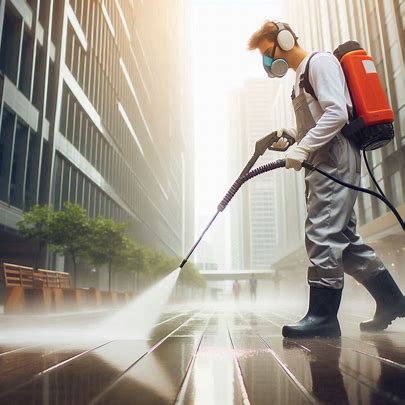How Pressure Cleaning Can Help Fight Urban Mold, Mildew, and Pollution

Concrete walkways, rooftops, and building facades in urban areas can harbor harmful mold, mildew, and grime. Over time, these pollutants not only damage surfaces but also pose serious risks to public health and the environment. As cities grow more compact and dense, outdoor surfaces become easy targets for algae, oil buildup, and airborne pollutants that settle from vehicle traffic and industrial emissions.
Thankfully, one powerful solution that’s making a visible difference is pressure cleaning. Services like Protek Pressure Cleaning Sunshine Coast are using high-powered water technology to remove layers of stubborn contaminants, helping urban communities maintain cleaner, safer outdoor environments. The benefits go far beyond aesthetics, offering environmental and health gains that cities can no longer afford to ignore.
Why Urban Areas Are Prone to Mold and Mildew
City surfaces are constantly exposed to moisture from rain, humidity, leaking pipes, and poor drainage systems. These conditions create the perfect breeding ground for mold and mildew. Concrete, brick, and wood absorb water, allowing spores to grow and spread quickly. Not only do they make public areas look dirty and neglected, but they also trigger allergies and respiratory issues for residents and workers who pass by daily.
Buildings near coastal regions or shaded by tall structures suffer even more. Without regular cleaning, algae and mold colonies become embedded in surfaces. Over time, these growths break down materials, leading to costly repairs or even structural problems. Pressure cleaning helps by cutting off their source, removing organic matter before it can spread further.
Pollution Build-Up on Outdoor Surfaces
Besides mold and mildew, urban surfaces collect a fair share of airborne pollution. Soot from traffic, construction dust, bird droppings, oil stains, and grime layer over time, dulling colors and reducing curb appeal.
These pollutants are ugly and toxic. They often contain chemicals that are dangerous when touched, inhaled, or washed into storm drains.
Pressure cleaning removes these layers safely, using a controlled stream of water, sometimes combined with eco-friendly detergents, to clean without damaging surfaces. This method helps reduce pollution runoff, which can otherwise enter water systems and harm aquatic life.
Supporting Healthier Communities
Clean surfaces contribute to a healthier public environment. Children playing on footpaths, elderly citizens walking in neighborhoods, and people relaxing in parks all benefit from safer surfaces. Mold, mildew, and grime can create slippery spots that increase the risk of falls. Regular cleaning helps prevent such hazards.
Pressure cleaning improves air quality. Mold spores and dust trapped on surfaces can become airborne again if left untreated. Washing them away means fewer allergens floating through the air, which helps people with asthma or respiratory issues breathe easier.
Eco-Friendly Cleaning for a Greener Urban Life
Modern pressure cleaning isn’t just powerful, it’s also environmentally responsible. Many services use minimal water and biodegradable solutions that are safe for pets, plants, and humans. When done correctly, pressure cleaning keeps pollutants from spreading into waterways, making it a better alternative to harsh chemical cleaning.
Some urban cleaning teams also reclaim water during the cleaning process, which prevents dirty runoff from entering drains. With smart pressure cleaning methods, cities can reduce their environmental impact while still maintaining high standards of cleanliness.
More Than Just Clean Walls
Think of pressure cleaning as a form of preventative maintenance. Clean sidewalks reduce slips and falls. Fresh-looking buildings boost local business visibility. And when streets and public spaces look well cared for, people feel safer and more connected to their surroundings.
Urban mold, mildew, and pollution aren’t just cosmetic problems; they affect our health, our economy, and the livability of our neighborhoods. Pressure cleaning is a smart, sustainable way to fight back against these hidden threats.
To maintain these gains long-term, communities can pair pressure cleaning efforts with broader principles of environmental stewardship, such as water conservation and waste reduction, to foster cleaner, healthier, and more resilient urban spaces.
Conclusion
Keeping cities clean is more than just sweeping the streets. Pressure cleaning has proven to be a vital service for reducing pollution, stopping mold before it spreads, and creating healthier places for everyone. As more communities realize the impact of these invisible threats, services like pressure cleaning will play an even larger role in urban upkeep. The cleaner the city, the safer its residents, and the brighter its future.

